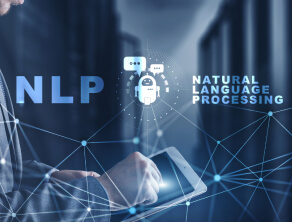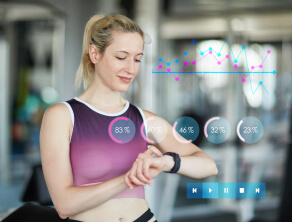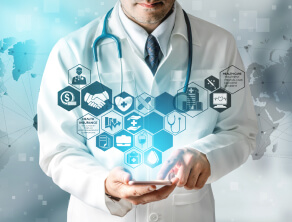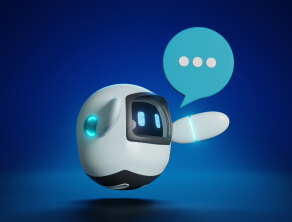All You Need to Know about Healthcare Technology.
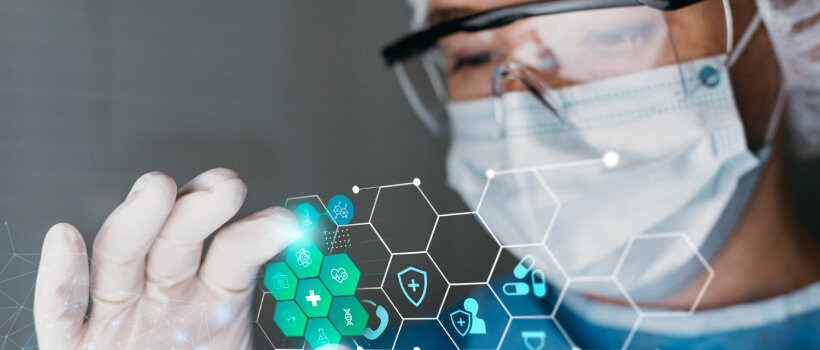
Technology has emerged as a driving force in the ever-evolving healthcare industry landscape, revolutionizing how we approach medical care and well-being. Health technology, a vast and dynamic field, encompasses an array of cutting-edge innovations, from digital health solutions to advanced medical devices, all aimed at enhancing patient outcomes, streamlining processes, and ultimately shaping a healthier world.
As the demands of modern healthcare continue to grow, so does the importance of integrating technology into medical practices. These innovative solutions leverage data, connectivity, and artificial intelligence to optimize diagnostics, treatment, and patient care, leading to a profound shift in how we perceive and manage health.
Healthcare Technology, also known as Health Technology or MedTech, refers to the application of advanced scientific and technological innovations within the healthcare industry to improve medical services, patient care, and overall health outcomes.
This field encompasses a wide range of hardware, software, devices, and processes designed to enhance the efficiency, accuracy, and accessibility of healthcare services while promoting better patient experiences and health management.
In this blog, we embark on a captivating journey to explore the realm of healthcare technology, delving into the remarkable strides made in the healthcare industry and the transformative impact of health technology on the well-being of individuals and communities.
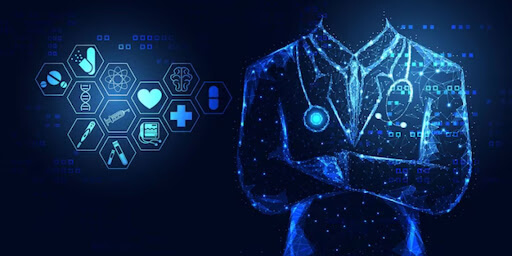
The Role of Healthcare Technology in the Healthcare Industry
The healthcare industry has undergone significant transformation due to health technology integration. Rapid technological advancements have revolutionized healthcare practices, improving patient outcomes, enhancing efficiency, and better overall healthcare experiences—enhanced Patient Care:
Health technology plays a pivotal role in delivering high-quality patient care. Electronic Health Records (EHRs) enable healthcare providers to access patients’ medical histories, diagnostic reports, and treatment plans promptly.
This seamless information exchange ensures better coordination among healthcare professionals, reducing medical errors and enhancing patient safety.
Empowering Medical Professionals:
Health technology has equipped medical professionals with advanced tools and insights. Additionally, AI-powered diagnostic algorithms help physicians analyze large datasets, enabling early disease detection and personalized treatment options based on individual patient characteristics.
Health Informatics and Big Data Analytics:
Health informatics and big data analytics have revolutionized healthcare research and decision-making. By aggregating and analyzing vast amounts of healthcare data, health technology has paved the way for evidence-based medicine and population health management.
These insights assist healthcare providers in predicting disease outbreaks, identifying high-risk patients, and implementing preventive measures, ultimately leading to improved public health outcomes.
Patient Engagement and Education:
Health technology has fostered patient engagement and education, leading to more informed and proactive healthcare consumers. Telehealth services and health-related educational platforms empower patients to participate in their treatment plans and make informed lifestyle choices, resulting in better health outcomes.
Fostering Healthcare Innovation:
Health technology has catalyzed continuous healthcare innovation. Technological advancements have opened new avenues for medical research and treatment options, from robotic-assisted surgeries to gene editing techniques. Startups and established healthcare organizations are investing in health tech innovations, shaping the future of the healthcare industry.
Key Components of Healthcare Technology
A. Electronic Health Records (EHR) and Health Information Systems
B. Medical Devices and Equipment
C. Telemedicine and Remote Patient Monitoring
D. Health Apps and Wearable Devices
E. Health Informatics and Data Analytics
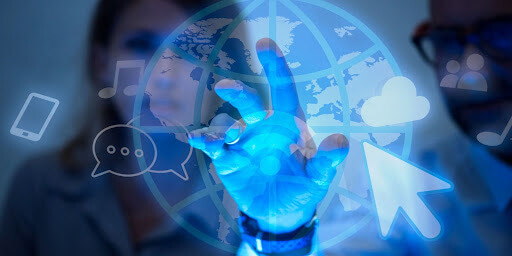
Advancements in Health Technology
Healthcare technology has rapidly evolved, revolutionizing how medical professionals diagnose, treat, and manage patient care. These advancements have significantly impacted the healthcare industry, improving patient outcomes, enhancing efficiency, and reducing costs. Here are some critical areas of health technology optimized to transform the healthcare sector:
Also read The Future of Healthtech: Trends and Innovations in 2023 and Beyond.
Telemedicine and Virtual Healthcare: Telemedicine has emerged as a game-changer, enabling remote consultations and virtual healthcare services. Patients can now receive medical advice, diagnostics, and even therapy sessions through video conferencing and digital platforms. This has expanded access to medical expertise, particularly in rural or underserved areas, and made healthcare more convenient for patients.
Electronic Health Records (EHRs): The adoption of EHRs has streamlined patient data management, allowing healthcare providers to access a patient’s medical history, test results, and treatment plans more efficiently. EHRs enhance care coordination, reduce errors, and enable better-informed decision-making, ultimately improving patient care and safety.
Artificial Intelligence (AI) and Machine Learning (ML): AI and ML have made significant inroads in the healthcare industry. They analyze vast amounts of patient data, identify patterns, and predict outcomes. These technologies aid in early diagnosis, personalized treatment plans, and drug development, leading to better patient outcomes and more effective healthcare interventions.
Internet of Things (IoT) in Healthcare: IoT devices are being integrated into healthcare to monitor patients’ health remotely and in real time. Wearable health trackers, intelligent medical devices, and remote patient monitoring systems allow healthcare providers to track vital signs, manage chronic conditions, and intervene promptly in emergencies, improving patient management and reducing hospital readmissions.
Robotics and Automation: Robotic-assisted surgeries and automation have revolutionized surgical procedures, making them more precise and less invasive. Robots can perform complex surgeries more accurately, reducing patient trauma, faster recovery times, and better surgical outcomes.
3D Printing in Healthcare: 3D printing technology has opened up new possibilities in healthcare, allowing the creation of patient-specific medical implants, prosthetics, and surgical models. This customization improves treatment efficacy and patient comfort while reducing costs and wait times.
Digital Health Apps: The proliferation of health and wellness apps has empowered individuals to take control of their health. These apps help users track their diet, exercise, and sleep patterns and manage chronic conditions. They also promote preventive care and healthy lifestyles, improving overall population health.
Genomic Medicine: Advances in genomic technology have enabled precision medicine, where treatment plans are tailored to an individual’s genetic makeup. Genomic testing helps identify genetic predispositions to diseases, predict drug responses, and develop targeted therapies for specific conditions, offering more effective and personalized healthcare.
Nanotechnology in Medicine: Nanotechnology is applied to drug delivery systems, diagnostics, and imaging technologies. Nanoparticles can deliver drugs to specific targets in the body, reducing side effects and improving therapeutic efficacy. Nanoscale imaging enables earlier and more accurate disease detection.
Blockchain in Healthcare: Blockchain technology finds applications in healthcare data management, ensuring secure and interoperable electronic health records. It helps maintain patient privacy and enables seamless sharing of health information among different providers, leading to more coordinated care.
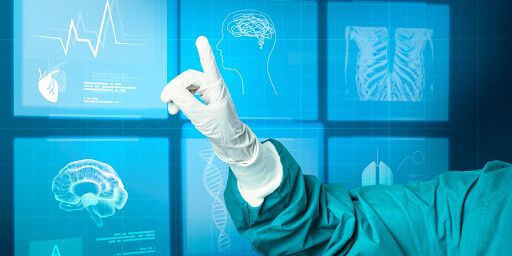
Impact of Health Technology on the Healthcare Industry
Enhanced Patient Care and Diagnostics:
Health technology has revolutionized the way healthcare providers diagnose and treat patients. Advanced diagnostic tools, such as medical imaging devices (MRI, CT scans, etc.), wearable health monitors, and point-of-care testing, have enabled faster and more accurate diagnoses. This translates into early detection of diseases, reduced error rates, and better treatment planning, ultimately improving patient outcomes and quality of life.
Telemedicine and Remote Healthcare Services:
Integrating health technology and telemedicine has brought healthcare services to remote areas, underserved populations, and patients with mobility challenges.
Telemedicine enables patients to consult with healthcare professionals virtually, offering real-time medical advice, remote monitoring of chronic conditions, and even performing minor procedures. This increased accessibility to healthcare services has significantly improved healthcare equity and reduced the burden on physical healthcare facilities.
Electronic Health Records (EHRs) and Health Information Exchange:
Healthcare technology has facilitated the transition from traditional paper-based records to electronic health records (EHRs). EHR systems store and manage patient information securely, ensuring easy access by authorized healthcare providers across different healthcare settings.
Health Information Exchange (HIE) allows seamless sharing of patient data among healthcare institutions, promoting continuity of care and reducing redundant tests and procedures, thereby lowering healthcare costs.
Personalized Medicine and Precision Treatments:
Health technology has enabled the advent of personalized medicine, tailoring treatments based on individual genetic makeup, lifestyle factors, and other patient-specific data.
Advances in genomics, data analytics, and artificial intelligence have significantly contributed to the development of precision medicine approaches, leading to more effective and targeted treatments. This approach improves treatment outcomes and reduces adverse reactions and unnecessary treatments.
Healthcare Analytics and Decision Support:
Integrating health technology with data analytics and artificial intelligence has empowered healthcare professionals with powerful decision-support tools.
These tools analyze patient data, identify patterns, predict potential health risks, and recommend appropriate treatment plans. Healthcare analytics helps providers make data-driven decisions, optimize resource allocation, and improve the overall efficiency of healthcare delivery.
Medical Robotics and Minimally Invasive Procedures:
Health technology has given rise to medical robotics, enhancing surgical precision and efficiency. Robots assist surgeons in performing procedures with greater accuracy, leading to reduced risks, shorter recovery times, and improved patient outcomes. Minimally invasive procedures, made possible by health technology advancements, also contribute to shorter hospital stays and lower healthcare costs.

Future Trends in Health Technology
Virtual and Augmented Reality (VR/AR) in Healthcare:
Virtual and Augmented Reality has emerged as transformative technologies in the healthcare industry, revolutionizing how healthcare professionals deliver services and patients experience care. These immersive technologies are optimized for the healthcare industry, fostering advancements in health technology and patient outcomes.
Virtual Reality has found applications in pain management and therapeutic interventions. Patients undergoing painful procedures or chronic pain can benefit from VR distraction therapy, where immersive experiences divert their attention from discomfort, reducing the need for conventional pain medication.
Nanotechnology and its Medical Applications:
Nanotechnology is a cutting-edge field that involves manipulating and controlling matter at the nanoscale level, roughly between 1 and 100 nanometers. This technology holds immense promise in various industries, with the healthcare industry being one of the primary beneficiaries. Nanotechnology’s application in health technology has opened up revolutionary avenues in medical diagnostics, drug delivery, imaging, and disease treatment.
5G and the Transformation of Healthcare Connectivity:
The healthcare industry is known for its reliance on cutting-edge technology to provide efficient and quality patient care. With 5G, healthcare facilities can optimize their operations, from patient monitoring and diagnostics to telemedicine and remote consultations.
The lightning-fast data transfer speeds of 5G facilitate real-time transmission of medical data and high-definition imaging, enabling healthcare professionals to make timely, accurate decisions, even in the most critical situations.
Bioprinting and Organ Transplantation:
Bioprinting is an innovative and revolutionary technique in the healthcare industry that combines advanced 3D printing technology with biology to create living tissues and even whole organs.
The process involves layer-by-layer deposition of biocompatible materials, known as bio-inks, containing live cells, growth factors, and other biological components. The integration of these elements allows the bio-inks to self-organize and mature into functional tissue structures.
Data-driven Health Interventions:
Data-driven health interventions are innovative approaches within the healthcare industry that leverage health technology and data analytics to improve patient outcomes and enhance healthcare services.
These interventions rely on systematically collecting, analyzing, and interpreting large-scale health data from diverse sources, such as electronic health records, wearables, mobile apps, and medical devices.
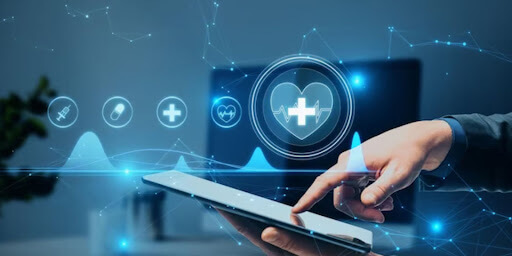
Case Studies: Successful Implementation of Healthcare Technology
Case Study 1: Pfizer’s Remote Monitoring Program for COPD Patients
Problem: COPD is a chronic respiratory disease affecting millions worldwide. It can be challenging to manage COPD, and patients visit the doctor frequently.
Solution: Pfizer developed a remote monitoring program for COPD patients. The program uses a mobile app and spirometer to track patients’ lung function at home. The data is transmitted to a central database, where healthcare professionals monitor it. If a patient’s lung function declines, the healthcare professional can intervene.
Results: The remote monitoring program has been shown to improve patient outcomes. Patients who participated in the program had fewer hospitalizations and emergency room visits. They also had better lung function and quality of life.
Key Lessons Learned:
- The remote monitoring program was successful because it was easy to use, and patients were motivated to participate.
- The program also required close collaboration between healthcare professionals and patients.
- The program reduced costs by reducing the number of hospital visits.
Case Study 2: Mayo Clinic’s Telemedicine Program
Problem: The Mayo Clinic is a large healthcare organization with multiple hospitals and clinics. This can make it difficult for patients to get the care they need, especially if they live in rural areas.
Solution: Mayo Clinic developed a telemedicine program that allows patients to see a doctor remotely. Patients can use a videoconferencing system to connect with a doctor at Mayo Clinic. The doctor can then assess the patient’s condition and provide treatment.
Results: The telemedicine program is effective in providing care to patients in rural areas. Patients who participated in the program were more likely to get the care they needed and were more satisfied with their care.
Key Lessons Learned:
- The telemedicine program was successful because it was convenient for patients and allowed them to see a doctor quickly.
- The program also required close collaboration between doctors and patients.
- The program was able to reduce costs by reducing the number of travel expenses for patients.
Conclusion:
In conclusion, healthcare technology plays a pivotal role in revolutionizing the healthcare industry, as it encompasses a wide array of innovative tools, medical devices, and applications to improve patient care, medical research, and operational efficiency.
Emphasizing the synergy between the healthcare industry and health technology is crucial for driving progress and ensuring optimal outcomes for patients and healthcare providers.
By optimizing health technology integration within the healthcare industry, we can unlock the potential to enhance diagnostic accuracy, streamline treatment processes, and facilitate remote monitoring, ultimately leading to better patient outcomes and increased accessibility to quality healthcare services.
Additionally, harnessing the power of data analytics and artificial intelligence in healthcare technology can empower medical professionals to make informed decisions, discover novel treatments, and manage patient populations more effectively.
The ever-evolving landscape of health technology offers opportunities for continuous improvement and cost-effectiveness within the healthcare industry, making it imperative for stakeholders to stay updated on the latest advancements and trends.
Collaboration and knowledge-sharing between healthcare professionals, technology experts, and industry leaders are paramount to creating a seamless synergy between the two domains.
As we move forward, prioritizing investment in research and development, user-friendly health technology interfaces, and cybersecurity measures will be critical to ensure that healthcare technology continues to pave the way for transformative changes in the healthcare industry.
By embracing the potential of health technology, we can foster a healthier, more connected world with improved access to cutting-edge medical solutions and a higher standard of patient care.
![Blog-[x]cube LABS](https://d6fiz9tmzg8gn.cloudfront.net/wp-content/uploads/2016/06/blog_banner.jpg)



